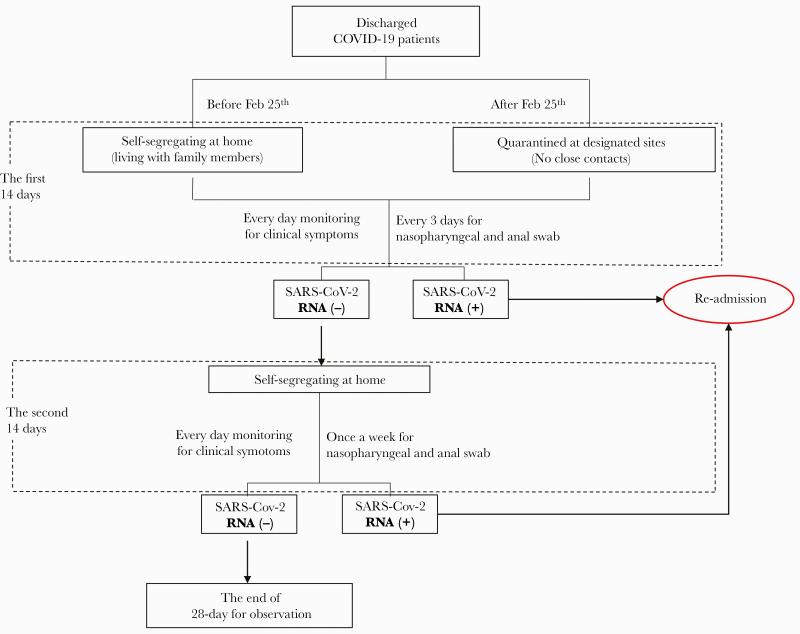Figure 1.
Flow chart for follow-up of coronavirus disease 2019 (COVID-19). As shown in the figure, during the first 14 days, patients discharged before February 25, 2020 in Guangdong Province were required to self-segregate for 14 days (A), whereas patients discharged after that time were mandatorily quarantined in designated sites for 14 days (B) and had no close contact since then. During the second 14 days, patients were self-segregated at home (C), and the community members followed up their symptoms by telephone and carried out viral ribonucleic acid (RNA) test once a week. Both A and C would generate close contacts. Once re-positive severe acute respiratory syndrome coronavirus 2 (SARS-CoV-2) RNA was tested, a second test would be carried out within 24 hours to determine the re-positive patient (see definition). Lung computed tomography was performed when positive SARS-CoV-2 RNA recurrence was confirmed. According to the results of SARS-CoV-2 RNA tests during follow-up, discharged patients were divided into a re-positive group and a negative group. Patients in the re-positive group were admitted to the designated hospital for further observation and treatment, and they were discharged again when they met the discharge criteria. Patients who had finished the processes above were included in our study.

